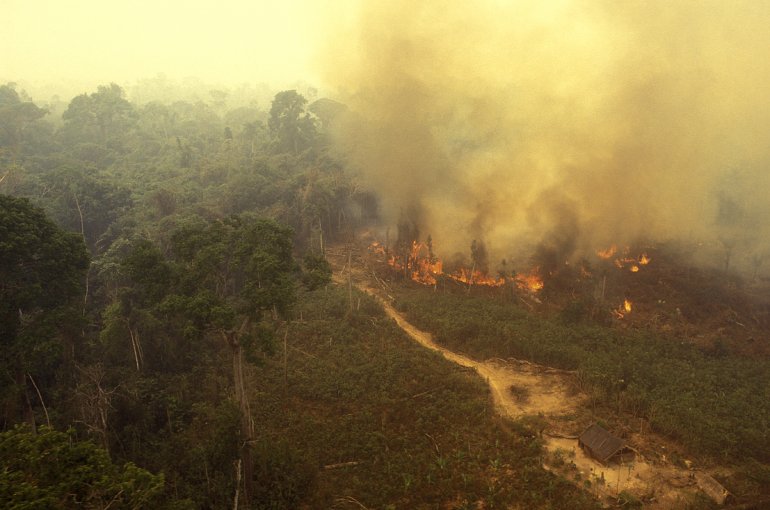Recovery of tropical forests after fire requires specialist knowledge

Some forests can take a bit of a beating, and a few even need fire to open up some space every few years: forest fires can stimulate new growth. Tropical rainforests, on the other hand, hardly recover from fire– unfortunately, they are increasingly exposed to them. Restoring fire-affected tropical forests requires specialist knowledge, a recent publication by junior researcher Anke Scheper and co-authors Dr. Pita Verweij and Dr. Marijke van Kuijk, reports. The article was published in the scientific journal Science of the Total Environment.
“There are few known cases of tropical forests successfully recovering after a fire,” Scheper says. Forest fires emit massive amounts of CO2, reduce the amount of living biomass and affect species composition. “Not to mention the damage to the homes and livelihoods of local communities.”
While fires in dry, temperate forests often have a natural origin, nearly all fires in tropical forests are caused by humans, for example to make way for agriculture and livestock.
Overgrown with invasive species
“If tropical forests are to recover naturally from a fire, without human assistance, ecological conditions must be optimal. Seedlings must be able to establish and survive. If the area becomes overgrown with fast-growing, invasive species, such as grasses and ferns, native tree species are less likely to grow into mature trees,” Scheper explains. Recurring fires in already damaged areas are also a major culprit in the recovery process. “If a fire rages over an area a second or third time, it’s very unlikely that seeds in the soil are still viable.”
Kickstarting forest restoration
Human intervention may be needed to reduce the chance of recurring fire and limit competition with invasive species. If seed-containing soil layers have been combusted, you can also replace the top layer of soil, and (re)introduce native species by seeding or planting. “As such, you can accelerate the natural recovery process,” Scheper says.
In their article, Scheper, Verweij and Van Kuijk describe different strategies to restore tropical forests affected by fire: “It is important to take into account the ecological and socio-economic context in which these fires occur. Tropical forests require specific attention because they follow different restoration pathways than fire-adapted ecosystems.”
“In addition, more emphasis should be placed on the characteristics of fire preceding restoration efforts, and long-term studies are needed to determine the rates of forest recovery, and to identify how different interventions match with fire characteristics and ecological conditions. New policy can be based on that,” Scheper concludes.
Publication
Scheper, A.C., Verweij, P.A., & van Kuijk, M. (2021). Post-fire forest restoration in the humid tropics: a synthesis of available strategies and knowledge gaps for effective restoration. Science of The Total Environment, 144647. https://doi.org/10.1016/j.scitotenv.2020.144647
This research was funded by Tropenbos International, Wageningen, and the Academy of Ecosystem Services, Utrecht University.

